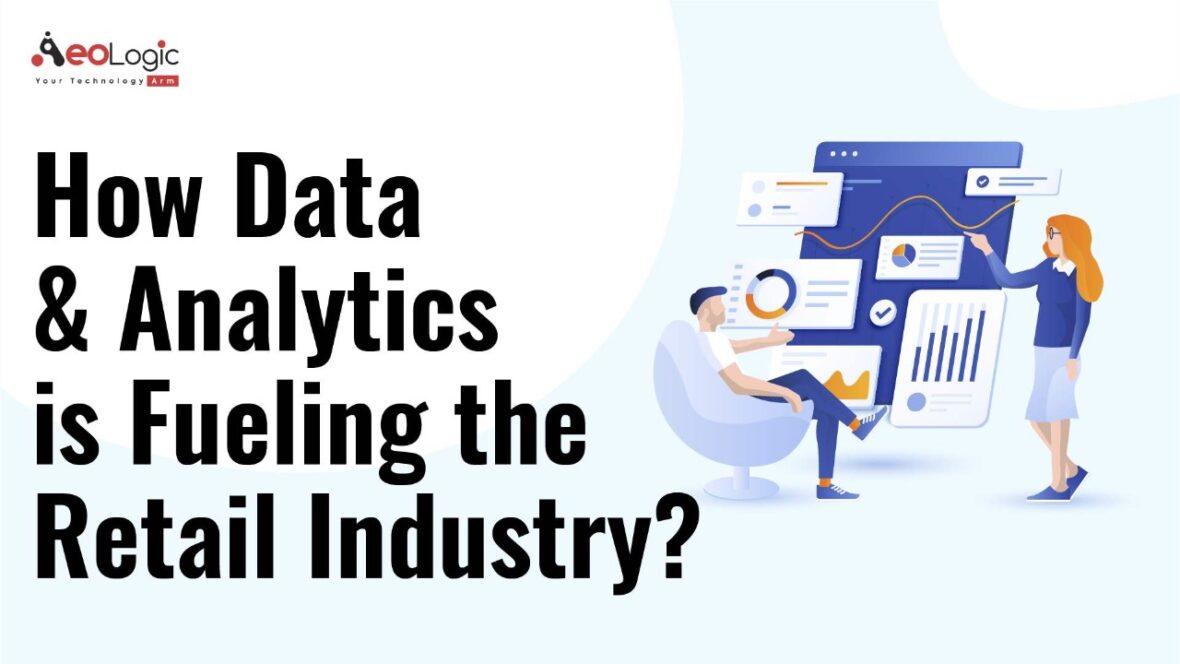One of the best ways to win clients nowadays is to target them with a unique approach. Which delivers them precisely what they’re seeking, and only data analytics can do this. Data and analytics allow retailers to turn data into useful insights. Data analytics solutions have been the driving force behind the growth of many industries. Manufacturing, healthcare, banking, and, most significantly, the retail sector are just a few of the industries that are taking advantage of this cutting-edge technology. Retail is one of the industries that is using data analytics solutions in a big way. The retail industry is adopting these technologies more quickly. because it reduces customer loss and improves the customer experience. So in this blog, we will look at how data and analytics are fueling the retail industry.
Let’s Start!
What is Big Data?
Big data is driving many organizations’ decisions, especially retailers. The McKinsey Global Institute predicts that merchants who embrace big data can enhance operating margin by more than 60%. There’s a data collection and availability boom. The data doubled in 1.2 years. Specifically, customer data is exploding. Online browsing, social media, mobile usage, purchases, and customer satisfaction statistics are examples. A company like Walmart collects 1 million transactions per hour, totaling 2.5 gigabytes. With the Internet of Things (IoT) growing rapidly, more data is continuously captured from sensors in Internet-connected products such as smartwatches, smart speakers, and wearables. This data requires massively parallel software on thousands of cloud-based machines. By 2020, one-third of the data will be processed through the cloud, yielding 35 zettabytes (35 x 1021 bytes) of data that may be scattered across half a million data centers worldwide.
Also Read: The Importance of CRM in the Retail Sector
Why is Data Important in Retail?
Retail data analytics allows you to dig deep into your data, and gain an advantage in a competitive industry. Data analytics can help your retail firm expand by pointing out opportunities for improvement. The main benefit of data analysis for retailers is the ability to gain a competitive edge by using their data to make better decisions. According to Harvard Business Research, the use of data-driven retail strategy has fallen behind other industries. Only 5% of the retail businesses surveyed fit the definition of data-driven organizations.
Why Should You Use Retail Analytics?
With retail analytics, you don’t have to guess when making business decisions about sales, marketing, planning, and pricing. Businesses can make smart choices based on how well their retailers do and how their customer’s act. Providers and stores use this information to find out what is selling, when, and how. So, they know how much stock to make, where and how to sell it, and when to give up and stop losing money. And global businesses aren’t the only ones who can use retail data analytics. 95% of stores have some kind of analytics data available to them.
Analyzing uneven data is difficult. It requires time, resources, and human error to gather, normalize, and analyze. Hence, retail analytics can help with this. With the help of retail analytics solutions, messy retail data is cleaned up and made easy to understand and act on. The majority of the approaches partition the measurements into:
- Sales
- Consumer demand
- Volumes of inventory
- Transportation along the supply chain
Data and Analytics are Fueling the Retail Industry
The following is a list of a few ways that highlight how data and analytics provide fuel for the retail industry:
Personalize Customer Relations
Data analysis is key to designing experiences that meet consumers’ personalization needs. Retail businesses of any size can benefit from modern analytics solutions’ capacity to ingest enormous amounts of data and provide relevant insights. You can utilize these insights to link customer preferences to brand experiences. This can involve developing items or giving advice based on a customer’s interests. So, the key to making all of these efforts work best is to collect and analyze accurate customer data.
Also Read: How Retail Apps are Reshaping the Customer Experience?
Improve Customer Experience
When people visit your website, they leave behind bits of data that can be used to figure out what works on your website. Using this information, you can make your customers more engaged. You’ll also be able to observe what your customers are most interested in. So, this analytics can help you increase your conversion rate.
Customers’ Identity Recognition
Client data helps categorize your customer base by demographic and other characteristics to better understand who they are. By analyzing your top clients, you can create an ideal customer profile for product development and marketing. Analytics and data can be used to target specific groups, so knowing your ideal customer is key to making your strategies better.
Also Read: Top AR & VR Trends to Transform E-commerce in 2022
Conclusion
During that time, the retail business has changed a lot. Using analytics, retailers may better understand the market dynamics. These technologies can give them a leg up on their competition.
To be successful in retail today, you need advanced analytics, metrics, and KPIs to make customer-centric business choices. To do so, retailers require data-backed procedures that can harness the power of retail data in their analytics journey to boost customer happiness, loyalty, and repeat purchases, and ultimately make the consumer more engaged and thrilled. It also boosts the company’s revenue. Retail businesses can employ data analytics to improve customer acquisition and revenue growth. E-commerce shopping sites may offer Excel files or in-app analytics for basic analytics. Optimizing data analysis to provide competitive insights requires technology that can thoroughly consume and evaluate data.
So, if you are looking for such data and analytics tools, connect with Aeologic Technology. We keep raw data in tables that can be analyzed in a few clicks.






